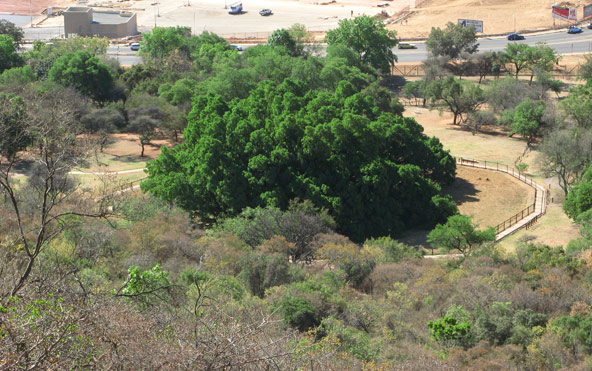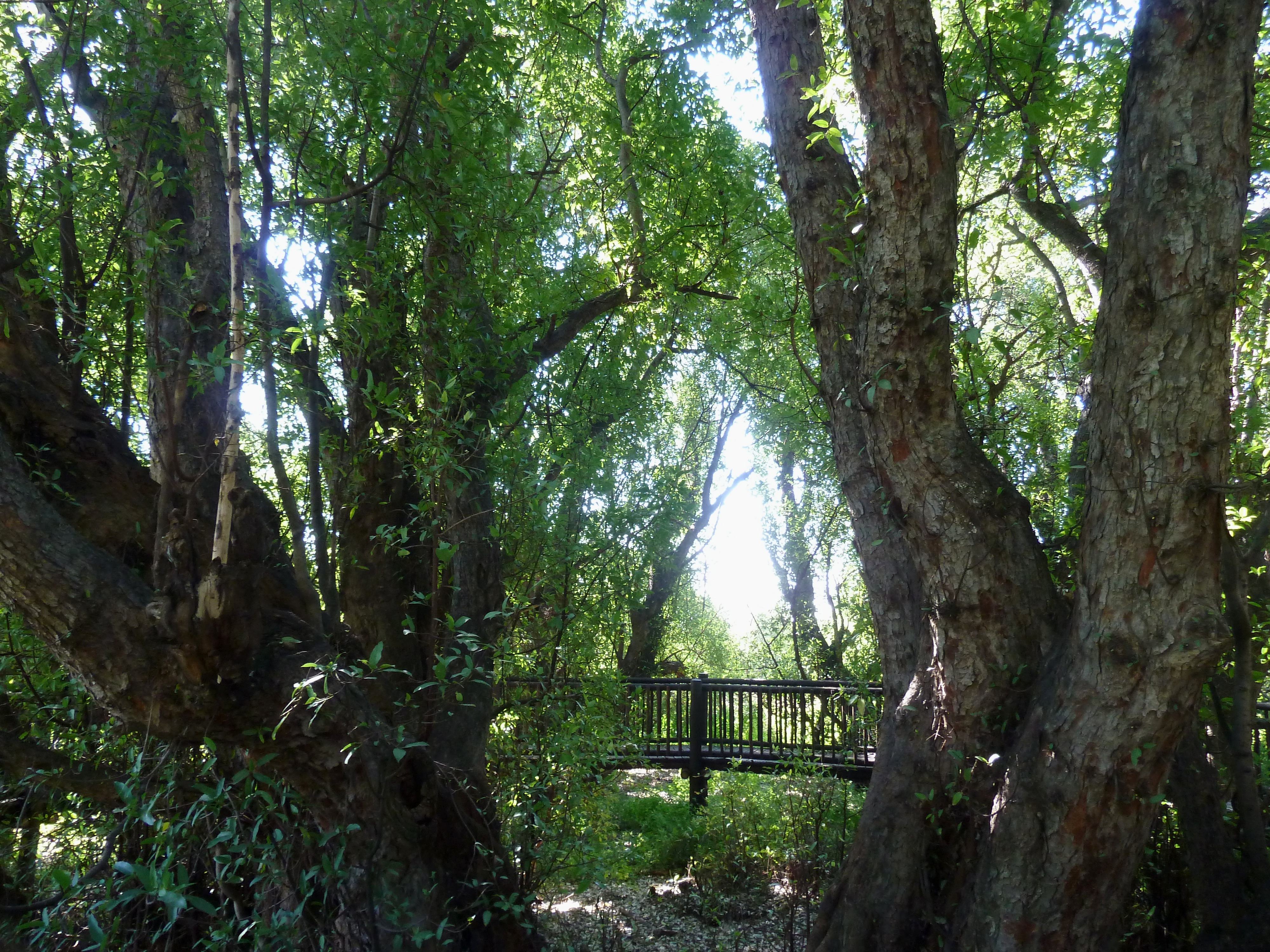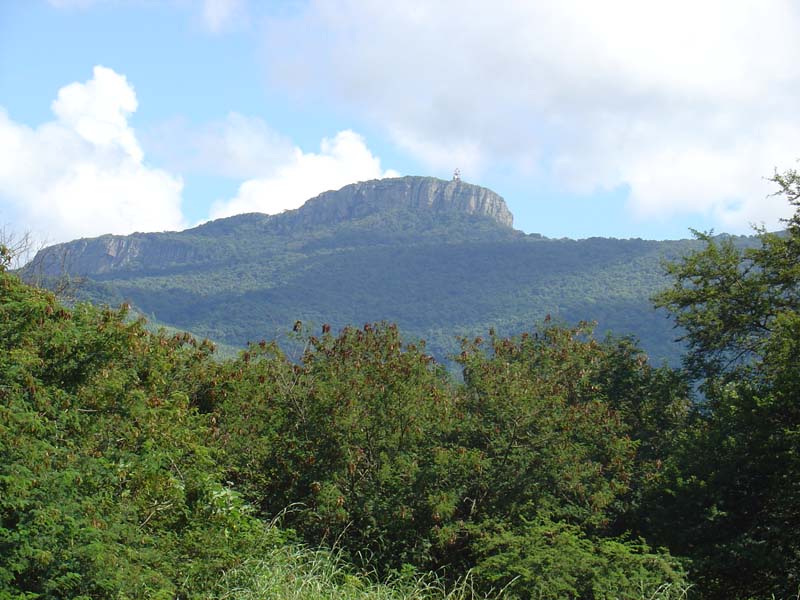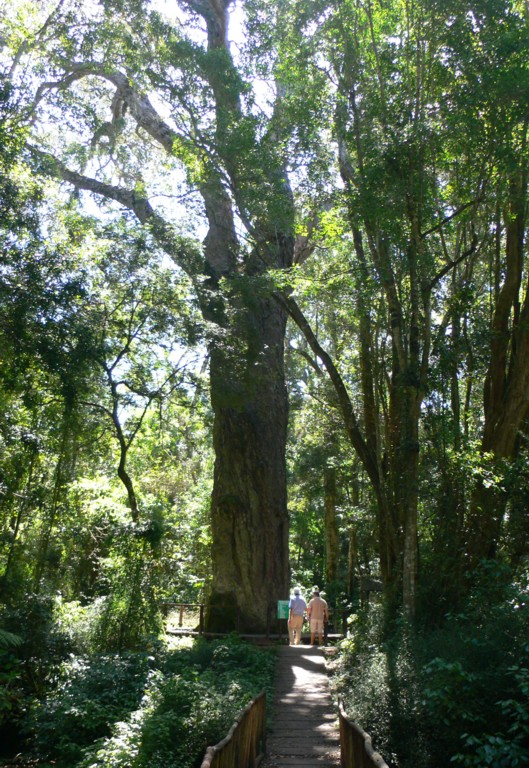|
Wonderboom (tree)
The Wonderboom (Afrikaans: 'wonder tree') is a dense grove of parent and daughter trees of the species ''Ficus salicifolia'', that descended from a central bole of about a thousand years old. It is situated in the Wonderboom Nature Reserve, Pretoria, and two circular walkways currently protect it from pedestrian traffic around its trunk and roots. As it has grown, its outlying branches have rooted themselves around the parent tree. This has repeated until there are now three layers of daughter trees encircling the mother fig, with 13 distinct trunks, covering an area with a diameter of over 50 metres. History The tree was discovered by the Voortrekkers in 1836 under the leadership of Hendrik Potgieter who named it the Wonderboom. Many Trekkers rested under its shade on their journey to the Soutpansberg. In 1870 a fire destroyed a large part of the tree reducing its size drastically. The Wonderboom Nature Reserve was declared a national monument on 23 September 1988. It was ... [...More Info...] [...Related Items...] OR: [Wikipedia] [Google] [Baidu] |
Wonderboom Nature Reserve
The Wonderboom Nature Reserve ( af, Wonderboom-natuurreservaat) is a 1 km², 200-hectare reserve that incorporates a section of the Magaliesberg range in the northern portion of the Pretoria metropole, South Africa. Its main attractions are the ''Wonderboom'' (Afrikaans for "Marvel tree") near the reserve entrance in Lavender street and the derelict Fort Wonderboompoort on the crest of the Magaliesberg, that was constructed towards the end of the nineteenth century, during the Second Boer War. The latter is reached by following the steep, paved walkway that leads from the picnic area to the summit. The vicinity of the fort ruins also afford sweeping views of the city, whose council declared the area around the ''Wonderboom'' and both banks of the Apies River a reserve on 28 December 1949. Wonderboom The well-known ' Wonderboom' (Afrikaans: 'Wonder tree') is a dense grove of parent and daughter trees of the species ''Ficus salicifolia'', that descended from a central bole ... [...More Info...] [...Related Items...] OR: [Wikipedia] [Google] [Baidu] |
Pretoria
Pretoria () is South Africa's administrative capital, serving as the seat of the Executive (government), executive branch of government, and as the host to all foreign embassies to South Africa. Pretoria straddles the Apies River and extends eastward into the foothills of the Magaliesberg mountains. It has a reputation as an academic city and center of research, being home to the Tshwane University of Technology (TUT), the University of Pretoria (UP), the University of South Africa (UNISA), the Council for Scientific and Industrial Research (CSIR), and the Human Sciences Research Council. It also hosts the National Research Foundation (South Africa), National Research Foundation and the South African Bureau of Standards. Pretoria was one of the host cities of the 2010 FIFA World Cup. Pretoria is the central part of the City of Tshwane Metropolitan Municipality which was formed by the amalgamation of several former local authorities, including Bronkhorstspruit, Centurion, Gaute ... [...More Info...] [...Related Items...] OR: [Wikipedia] [Google] [Baidu] |
Ficus Salicifolia
__NOTOC__ The Wonderboom (''Ficus salicifolia'') is an evergreen fig species that ranges from the KwaZulu-Natal midlands northwards to tropical East Africa. It grows especially on outcrops, rocky hillsides and along cliffs fringing water courses and may rarely grow up to 10 m tall, and acquire a leafy spreading crown. Description The elliptic-oblong, leathery leaves of about 7 to 10 cm long, are carried on long petioles, and are often noticeably folded along the midrib. The leaf sides are almost parallel and clear net-veining is visible on the lamina. Leaves are brittle and have a characteristic smell when broken or bruised. The leaves are toxic and cause nervous disorders or even deaths in cattle. The small, smooth figs are carried on short stalks and measure about 4–6 mm in diameter. They are massed along the branchlets in the leaf axils, and change from white to yellowish-red and spotted as they ripen. The figs are eaten by birds and mammals. Similar species It ma ... [...More Info...] [...Related Items...] OR: [Wikipedia] [Google] [Baidu] |
Ficus Salicifolia - Die Wonderboom, B, Wonderboom Natuurreservaat
''Ficus'' ( or ) is a genus of about 850 species of woody trees, shrubs, vines, epiphytes and hemiepiphytes in the family Moraceae. Collectively known as fig trees or figs, they are native throughout the tropics with a few species extending into the semi-warm temperate zone. The common fig (''F. carica'') is a temperate species native to southwest Asia and the Mediterranean region (from Afghanistan to Portugal), which has been widely cultivated from ancient times for its fruit, also referred to as figs. The fruit of most other species are also edible though they are usually of only local economic importance or eaten as bushfood. However, they are extremely important food resources for wildlife. Figs are also of considerable cultural importance throughout the tropics, both as objects of worship and for their many practical uses. Description ''Ficus'' is a pantropical genus of trees, shrubs, and vines occupying a wide variety of ecological niches; most are evergreen, bu ... [...More Info...] [...Related Items...] OR: [Wikipedia] [Google] [Baidu] |
Wonderboom2 , a South African rock band from Johannesburg
{{disamb ...
Wonderboom (meaning "wonder tree" in Afrikaans) may refer to: * Wonderboom (tree) a particular grove of ''Ficus salicifolia'' north of Pretoria, and eponym of: ** ''Ficus salicifolia'', a species of fig ** Wonderboom Nature Reserve, containing the grove ** Wonderboom South, Pretoria, a suburb south of the nature reserve ** Wonderboom Airport, an airport in the region * Die Wonderboom, an unusually shaped '' Boscia oleoides'' (Karoo shepherd's tree) beside the N9 at Willowmore, Eastern Cape * Wonderboom (band) WONDERboom is a 4 piece South African rock band from Johannesburg. They formed in 1996 when Martin, Wade and Cito, originally in an underground band called "The Eight Legged Groove Machine", were approached by Danny, the drummer for the popula ... [...More Info...] [...Related Items...] OR: [Wikipedia] [Google] [Baidu] |
Afrikaans
Afrikaans (, ) is a West Germanic language that evolved in the Dutch Cape Colony from the Dutch vernacular of Holland proper (i.e., the Hollandic dialect) used by Dutch, French, and German settlers and their enslaved people. Afrikaans gradually began to develop distinguishing characteristics during the course of the 18th century. Now spoken in South Africa, Namibia and (to a lesser extent) Botswana, Zambia, and Zimbabwe, estimates circa 2010 of the total number of Afrikaans speakers range between 15 and 23 million. Most linguists consider Afrikaans to be a partly creole language. An estimated 90 to 95% of the vocabulary is of Dutch origin with adopted words from other languages including German and the Khoisan languages of Southern Africa. Differences with Dutch include a more analytic-type morphology and grammar, and some pronunciations. There is a large degree of mutual intelligibility between the two languages, especially in written form. About 13.5% of the South ... [...More Info...] [...Related Items...] OR: [Wikipedia] [Google] [Baidu] |
Hendrik Potgieter
Andries Hendrik Potgieter, known as Hendrik Potgieter (19 December 1792 – 16 December 1852) was a Voortrekker leader and the last known Champion of the Potgieter family. He served as the first head of state of Potchefstroom from 1840 and 1845 and also as the first head of state of Zoutpansberg from 1845 to 1852. Beyond the Orange River Potgieter and his party moved inland to the present Free State, where they signed a treaty with the leader of the Barolong, Moroka. The treaty stipulated that Potgieter would protect the Baralong against the Matabele raiders, in exchange for land. The tract of land was from the Vet River to the Vaal River. The Matabele leader, Mzilikazi, was threatened by the white incursion into what he saw as his sphere of influence, which led to the Matabele's attack on the Potgieter laager in October 1836, at Vegkop, near the present-day town of Heilbron. The attack was beaten off, but the Matabele made off with most of the trekker oxen, crucial draugh ... [...More Info...] [...Related Items...] OR: [Wikipedia] [Google] [Baidu] |
Soutpansberg
The Soutpansberg, (formerly ''Zoutpansberg'') meaning "Salt Pan Mountain" in Afrikaans, is a Mountain range, range of mountains in far northern South Africa. It is located in Vhembe District Municipality, Vhembe District, Limpopo. It is named for the Salt pan (geology), salt pan ( ve, Thavha ya muno, or "place of salt") located at its western end. The mountain range reaches the opposite extremity in the Matikwa Nature Reserve, some due east. The range as a whole had no Venda language, Venda name, as it was instead known by its sub-ranges which include Dzanani, Hanglip, Songozwi and others. Of late it is however known as Tha vhani ya muno, meaning "mountain of salt". The Soutpansberg forms part of the 'Vhembe Biosphere Reserve', which was designated as a biosphere reserve by UNESCO in 2009. The latter reserve also includes the Blouberg Range, Kruger National Park, Makgabeng Plateau, Makuleke Wetlands and the Mapungubwe Cultural Landscape. Geography The mountain is intersected by t ... [...More Info...] [...Related Items...] OR: [Wikipedia] [Google] [Baidu] |
Department Of Agriculture, Forestry And Fisheries (South Africa)
The Department of Agriculture, Forestry and Fisheries was one of the departments of the South African government. It was responsible for overseeing and supporting South Africa's agricultural sector, as well as ensuring access to sufficient, safe and nutritious food by the country's population. The department fell under the responsibility of the Minister of Agriculture, Forestry and Fisheries. In 2010 the minister was Senzeni Zokwana. In the 2014 national budget, the department received an appropriation of R6,178 billion rand, and had 5,924 employees as of 2010. In June 2019 government departments were reconfigured. The agriculture function of DAFF became part of the new Department of Agriculture, Land Reform and Rural Development, while the forestry and fisheries functions became part of the Department of Environment, Forestry and Fisheries. References External links Official websiteGazette Notices per Department of Agriculture, Forestry and Fisheries Agriculture Agricult ... [...More Info...] [...Related Items...] OR: [Wikipedia] [Google] [Baidu] |
The Wonderboom Tree, RAMC O-S-31-557 Wellcome L0022435
''The'' () is a grammatical article in English, denoting persons or things that are already or about to be mentioned, under discussion, implied or otherwise presumed familiar to listeners, readers, or speakers. It is the definite article in English. ''The'' is the most frequently used word in the English language; studies and analyses of texts have found it to account for seven percent of all printed English-language words. It is derived from gendered articles in Old English which combined in Middle English and now has a single form used with nouns of any gender. The word can be used with both singular and plural nouns, and with a noun that starts with any letter. This is different from many other languages, which have different forms of the definite article for different genders or numbers. Pronunciation In most dialects, "the" is pronounced as (with the voiced dental fricative followed by a schwa) when followed by a consonant sound, and as (homophone of the archaic pr ... [...More Info...] [...Related Items...] OR: [Wikipedia] [Google] [Baidu] |
List Of Champion Trees (South Africa)
Champion Trees in South Africa are individual trees or groves that have been identified as having special significance, and therefore protected under Section 12(1) of the National Forests Act of 1998 by the Department of Forestry, Fisheries and the Environment. History In 2003, the Department of Agriculture, Forestry and Fisheries initiated the project to identify and grant special status to indigenous and non-indigenous trees in South Africa that meet certain set criteria. From May to July 2003, workshops were held in Gauteng, KwaZulu-Natal and the Western Cape to gain consensus from experts to assist in the identification process of exceptional trees (Champion Trees) that are worthy of special protection throughout South Africa. The Department of Agriculture, Forestry and Fisheries initiated the Champion Trees Project with the purpose of identifying exceptional trees and regulating for their special protection using the National Forests Act of 1998 (NFA). Section 12 of ... [...More Info...] [...Related Items...] OR: [Wikipedia] [Google] [Baidu] |






.png)
